Imagine spending countless hours and many thousands of pounds restoring your precious classic or modern-classic car only to discover that one minor modification has rendered the car virtually worthless.
That’s exactly what happened to Ed Keane of Powys when he decided to update his 1960 Mini. After a lengthy, painstaking restomod process he had the car inspected and received nothing but positive impressions from the inspector. But then word came back from the DVLA that the car was no longer deemed roadworthy.

Like an increasing number of classic car fans Keane elected to convert his car to use an electric powertrain, but that isn’t directly what caused his woes. The DVLA had no issue with removing the original A-Series engine and replacing it with a powertrain developed by Eco Classics – it failed the car for a single small hole that had been drilled to route some high voltage cables.
“It seems there has been material removed from the monocoque/body shell by means of drilling… it is not possible to confirm that the structure of this vehicle is as per the manufacturer first intended,” wrote the DVLA.
“They have taken it off the road because I drilled a hole, and it’s got absolutely nothing to do with the electrification of the vehicle. Also, and this is quite a fundamentally important point, they will not let me weld up the hole, which I think is unreasonable.”
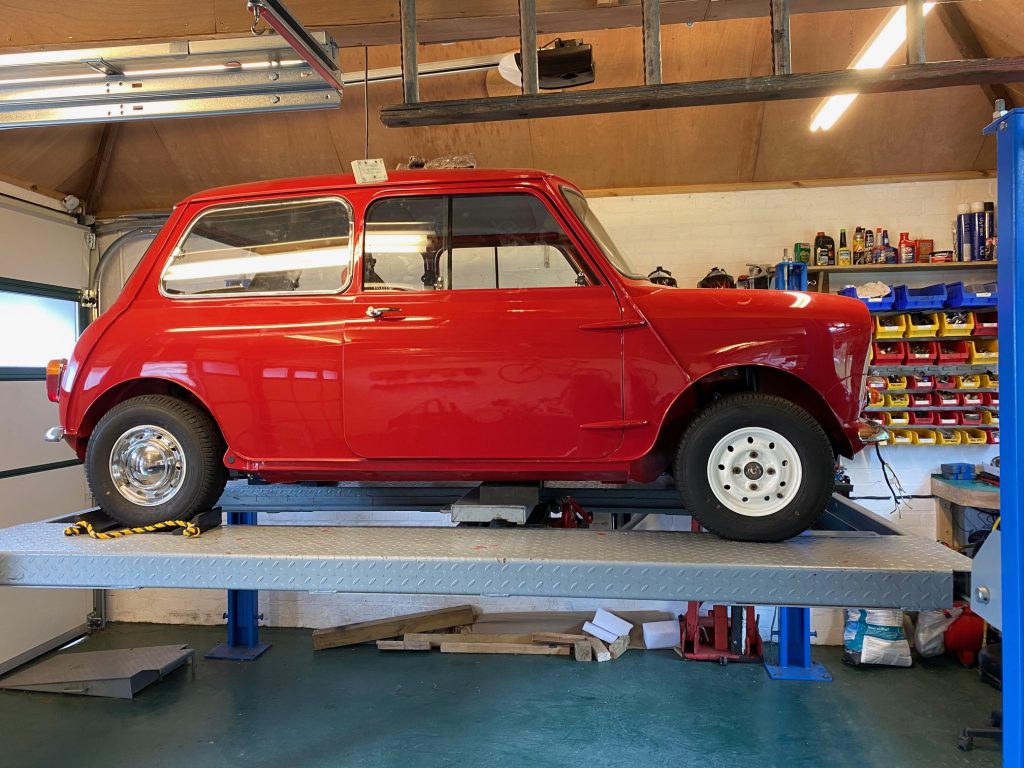
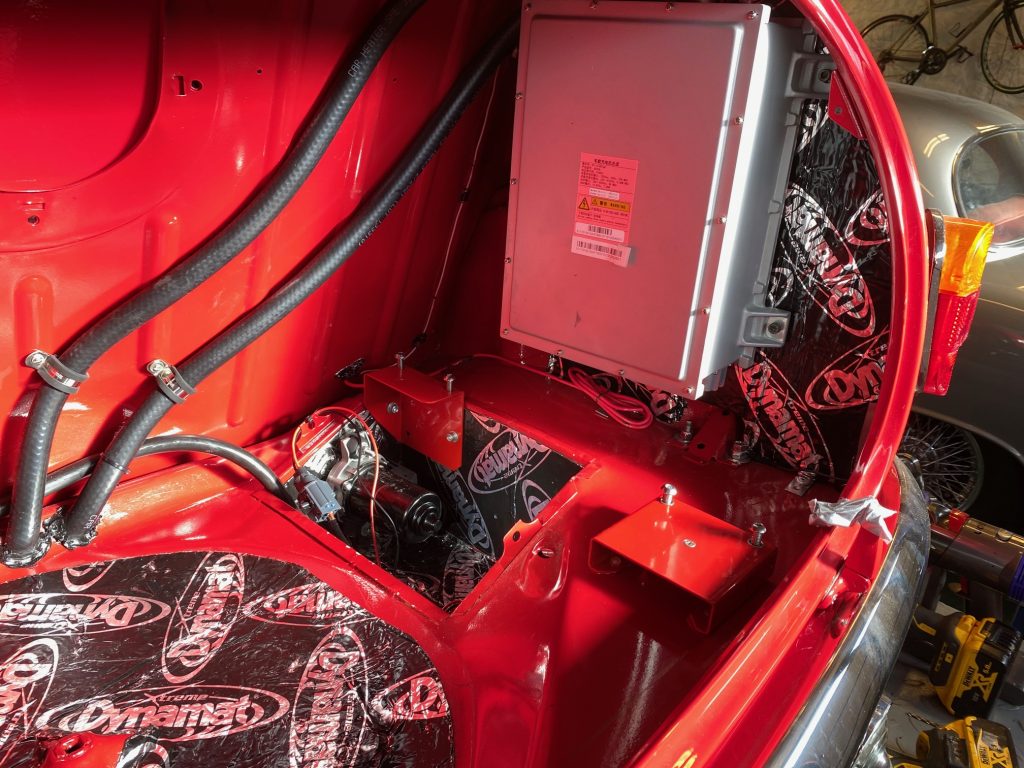
Nick Mason of Eco Classics explains that the hole in question goes through the original 12-volt battery box in the Mini’s boot floor: “We came through the side of that with two cables, just to get in the easy way. This is not structural, but we lost out anyway.”
The DVLA confirmed that reverting the chassis back to its original state would still be considered a modification from the original manufacturer’s specification, requiring the car to be re-registered. That would mean submitting the car for an IVA (Individual Vehicle Approval) test, like a kit car would have to undergo, and have it registered on a Q-plate. However, says Keane, this is just not economically viable: “I’d probably have to spend £20,000 to comply with the current IVA rules as it was never designed to meet them. ”
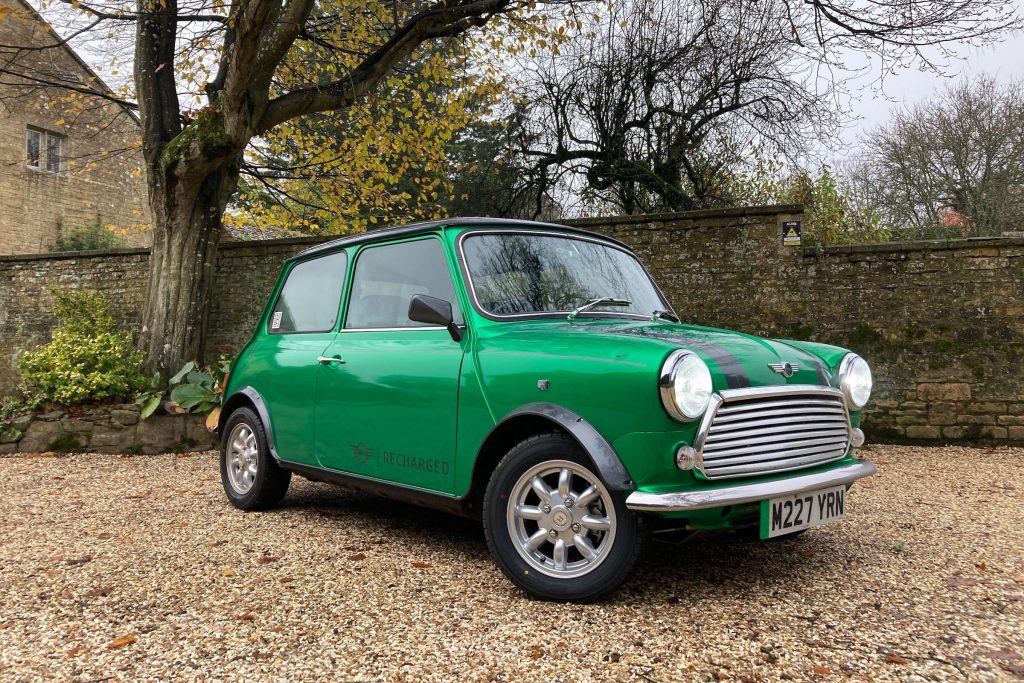
Keane’s unfortunate experience is a warning to anyone restoring or modifying a classic car. One single mis-step may prove catastrophic. So how should vehicle owners, and indeed professional restorers, approach the process, especially when updating an older car rather than conducting an entirely faithful restoration?
The very first thing to consider is if any changes you make would require the details on the car’s V5 to be updated. If that’s the case you will need to inform the DVLA of any alterations. Typical examples would be something as simple as a colour change or as complex as a powertrain swap.
Next you need to check with the DVLA exactly what category your build will fall into. It will be classed as a Rebuilt vehicle if you are keeping the original chassis or bodyshell (or using a new shell/chassis to the original spec) and keeping at least two of the following elements as standard: suspension, steering assembly, axles, transmission and engine.
DVLA points table for keeping an original registration
| Part | Points |
| Chassis, monocoque bodyshell (body and chassis as one unit) or frame – original or new and unmodified (direct from manufacturer) | 5 |
| Suspension (front and back) – original | 2 |
| Axles (both) – original | 2 |
| Transmission – original | 2 |
| Steering assembly – original | 2 |
| Engine – original | 1 |
Any changes beyond those and it will be defined as Radically Altered, and the DVLA applies a points scheme if you wish to keep the original registration. You must score a minimum of eight points and five of those must come from an un-modified original chassis/monocoque, or a new one direct from the manufacturer. Original suspension, axles, transmission and steering assembly each get awarded two points, while keeping the engine scores one. Any alterations to the chassis, the fitment of a second-hand shell, or scoring less than eight points means that your car will be subject to an IVA test and have to have a Q-plate fitted.
In either case you will need to submit a “Built up inspection report” detailing the work done and potentially have the car inspected by a DVLA representative.
Steve Drummond of EV conversion specialist Electrogenic puts it more succinctly: “When you boil it down, what it says is that you can only modify two out of the following four things being the motor, the gearbox, the steering, and the suspension.
“Just make sure you don’t modify the chassis or the monocoque and, and if you’re rigorous about that, then they check it all and that’s all fine.”
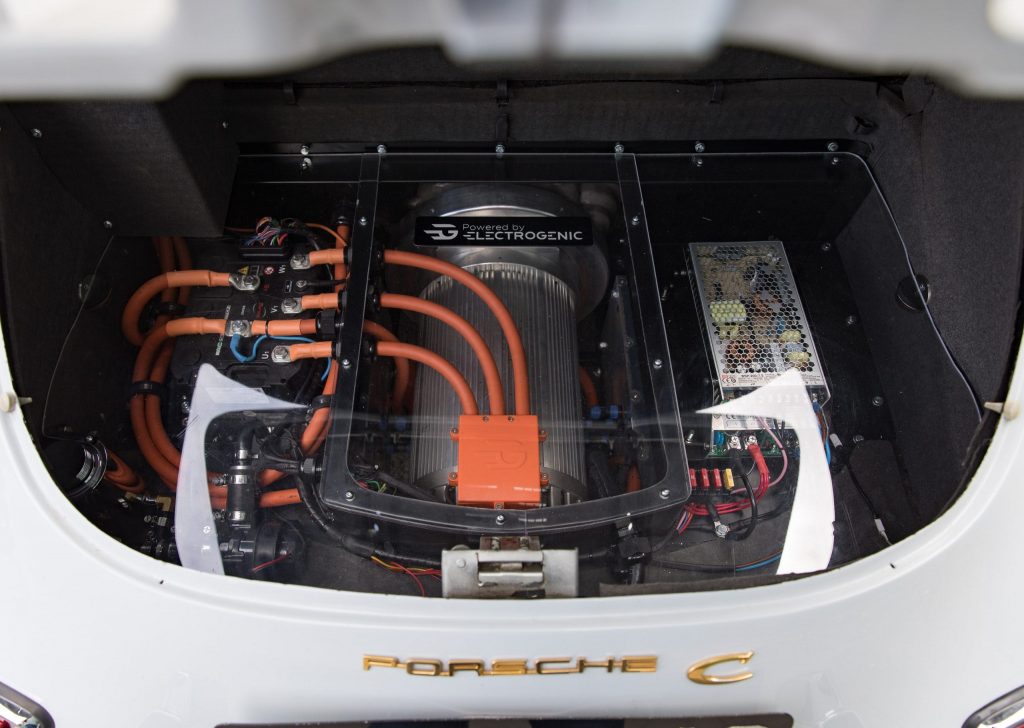
In the case of EV conversions the DVLA says each vehicle is considered on a case-by-case basis and is referred to its Kits and Rebuilds team. Amazingly, however, there are no clear rules to follow when it comes to fitting a totally new powertrain, especially an electric one.
“It’s remarkable how little legislation there is in the UK,” says Drummond. “There’s a bunch of broad rules and regulations for new electric cars, but none of that applies to conversions. The main regulation for new cars is an electrical safety one called R100 and we make sure that we take that seriously.
“Most countries are concerned with things like electrical safety, and often power. For example, in Switzerland there are a bunch of rules. The main one is that you can’t have power which is more than 20 per cent greater than the original engine. In France, the work needs to be done in France, and you can’t make the car go faster than it did originally.”
Of course it’s not just people electrifying their classics who face falling foul of the DVLA.
“It has implications across the whole of the classic car world because there are so many cars out there that have been modified over time. Just drilling holes to fit something like electronic ignition could invalidate the body, for example. There clearly needs to be some level of interpretation there. I would like to have a clear set of rules, maybe even as an industry become certified,” adds Mason.
Read more
Drivers deserve better from the DVLA
The 6 most complicated restoration steps
Charging around: Electric Mini Recharged driven









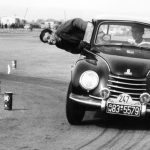
That mini from your report was originally a 1960 mini. When the engine was changed to a motor the DVLA did not have an appropriate box to tick because they could not accept that a motor did not have recognisable cubic capacity. Thus they declared it a kit car!
Because it was a kit car they could apply kit car rules. They gleefully ‘discovered’ a drilled hole in the boot and so declared the chassis radically modified and so gave it zero out of 5 points. Thus justifying their deletion of the registration. Incredibly they refused to allow the hole to be welded up because the welding would have been subsequent to the drilling (no one knows how to weld up a hole before it exists but that is not their concern).
They ignored 3 letters from my MP, why? Because they can.
I am now forced to scrap a beautifully restored classic electric car because of a drilled hole.
You could not make this stuff up!
Keane
Not worth scrapping it’s been modified but surely if it’s welded back up then it’s back to it original monocoque state , may be worth contacting a guy called Kevin Rooney he wrote a column in street machine about getting through biva regulations they had a 55 sit up n beg pro eliminator hot rod which was road legal , yes it’s on a q plate but shows even something like that can be made road legal . Seems funny that a government orginisation are pushing EVs , but as soon as try to modify or convert an existing car it’s deemed unroadworthy .
If this is truly the case, then the ramifications are far more reaching than just the issue as stated in the last paragraph of someone drilling a hole; but if as stated earlier in the article that hole cannot be restored back to its original state then any repair to ANY car means that it’s no longer original and has to regarded as Radically Altered and subject to an IVA and a Q plate.
This would them that virtually all classic car are now worthless & no longer road legal because they have been repaired, even if back to factory original.
There’s obviously some other undisclosed details in the article because if the conversion has only deviated from the original car only by a single small hole, other the obviously installed EV drivetrain then it would never cost £20000 to comply with a basic IVA just like any kit car or rebuilt vehicle. The basic IVA cost is around £500 and in the main consists of inspection of various components.
Also it has glossed over the fact that the drivetrain kit had been supplied (or even possibly installed) by Eco Classics and Keane appears to have either ignored their installation advice or question whether Eco Classics are the ones liable for the issue and not taking the responsibility to resolve the matter.
Most annoying thing is they don’t have clear rules to follow and they don’t force modified cars to have the IVA when the chassis or body have been hacked / channelled / dropped etc etc.
Not being able to weld up the drilled hole is pathetic. How do they justify that when they allow rust repairs…..?
Unfortunately it’s ‘big brothers’ way of ridding our roads of our cherished motors because their remit is their way only, communism control by the back door
The issue here is not electrification but drilling holes and welding. Most classic cars on the road today have had holes drilled and welding repairs. Most owners would not know what holes are original, factory/dealer/owner ,modifications. Welding is defined in the MOT inspection as acceptable if it meets the standard. This case identifies welding as not acceptable. How does DVLA explain how in one case its acceptable and approved but in the other its not???. Seems to me a case of abuse of power.
If these cases are not challenged all welding repairs to chassis/monocoque would be illegal!! as would restorations which are not to original manufacture standards, how can you prove your rebuilt classic meets original manufacture specifications, most do not have original manufacture drawings and design specifications available. Can DVLA prove it does not meet specification and is seriously weakened by having a welded ‘repair’.??
Government departments need to be forcibly reminded that they serve us, not the other way round. They should have engaged with the car builder, to overcome this, to find a solution,
So this is a nasty little power play (I do this because I can). Disgusting from the DVLA.
This is totally wrong who thought of and implemented the rules ? the people who are policeing the rules can not have any engineering /automobile structural experience and therefore should not be in a position to police the rules that are fundamentally wrong
I would like to know which
engineering /automobile organisation reviewed
The rules before they where implemented
Can you sell it overseas?
The USA probably doesn’t have these crazy restrictions.
I could be in the market. What are the specs of the conversion?
Unbelievable to scrap a perfect car, there must be a way around this idiocy. Surely a brand new welded in panel would get around their problem of a drilled hole? It’s jobsworth madness.
How many classic cars have holes drilled in them when period accessories, aftermarket sunroofs etc have been added over the years. What about welding up rust holes surely that is the same as filling a drilled hole so that would be virtually all classic cars that have been restored. Sadly we live in a country where most people want old cars off the road
Hi, same thing has just happened to me with my mk2 Mini Cooper S. The car had been restored by its previous owner who lost the commission and vin plate which he replace the commission but he put the vin number on it instead of the commission number if that make sense.
I then contacted DVLA for some guidance and that’s when all the trouble started. They sent a dvla inspector over and he was happy with everything and that all the paperwork was correct but they wanted more information and photographs of the restoration which I happily supplied which they then came back with the bombshell that the car would need to go on a Q plate as it had front inner wing replaced as the original ones where rotten.
Their explanation to this was that we had damage the monocoque bodyshell by replacing the inner wings. I’m absolutely gutted that by doing the right thing they have now taken away the mini identity by putting it on a Q plate. These cars are getting rarer every year but the way dvla are acting nobody will want to contact them for any advice which will drive the issue of identification even more so.
so how come the cars on vintage voltage show keep their reg they’re heavily modified
This looks like some jobs worth person who has no idea what they are talking about ..If a car fails an MOT now on a welding repair where there is hole some were does it mean it can never be repaired and go back on the road .
The DVLA inspector clearly has little or no proper knowledge of his job.
Little or no structural strength knowledge or even common sense,
Almost 100% of mini’s will have been welded in that and many other areas of the body shell,
I have had personal experience of DVLA stupidity, in a different way, whilst trying register an imported vehicle, attempting to provide DVLA with confirmation of the vehicles year,
DVLA require,
The foreign registration document, or
A letter from a car club associated with that type of vehicle, or
Evidence from the vehicle manufacturers,
I provided the Puerto Rican registration document, to which I was told it wasn’t one!!!
(My sister in law is Puerto Rican & was living in Puerto Rico at the time & I purchased the vehicle from her, it WAS)
I explained the above, to which the reply was (I note in WRITING!) DVLA dont accept Puerto Rican registration documents!
NB DVLA accept “foreign”registration documents, no mention anywhere to the effect “except Puerto Rican registration documents”
I then obtained the actual build date from General Motors Cadillac, a build sheet printed from their log at time of manufacturing.
The response from DVLA was they couldn’t accept that as it was a photocopy!!!
No manufacturer is going to part with their original!!!
Only when I threatened R, Alexander, dealing with it at DVLA with solicitor and MP action & asked for evidence of DVLA not accepting Puerto Rican documents ect, did I get a very quick registration
Maybe you could start an online petition and get some backing from the classic car community?
I have had similar problems with the DVLA, to the point at which the insanity coming from them has reached sub-orbital levels. One memorable little nugget was their claim that a rule trumps the rule’s exemptions, and other conversations have made similarly little sense. They seem to be a completely lawless, unhelpful, untouchable and frankly mercenary rogue organisation with very little understanding of motoring. I intend to take them to the Parliamentary Ombudsman as I refuse to let them get away with their nonsense. You have my sincere and deepest sympathies.
What constitutes as changing the suspension? Does putting on aftermarket springs count or would you have to alter more than that?
This is ridiculous. How about all those rally cars where piping is rerouted to inside the car, to protect from damage ? Are they all now ‘write-offs’ ? Or how about a new car, crash repaired where panel spot welds are drilled in order to fit new panels? Are they all automatically ‘weire-offs’ now too ? Finally, Q-registrations vs original Registrations – why does it matter? People need to get over the Registration number complex they have and value cars based on the actual vehicle, not what number plate is on it.
DVLA losing out on a lot of road tax on classic car’s and motorcycle’s is this the reason for silly rules
It strikes me that classic car owners need an organisation to represent them. Once apon a time that would have been the AA, but I fear no more.
I’m one who thinks that removing the traditional power train relegates the vehicle to something other than a Classic Car.
I have come to the conclusion that it is best to tell the DVLA as little as possible, they really don’t know anything about classic vehicles,
I tried to re-register a rebuilt 1979 motorcycle but despite it having it’s original frame number they insisted on giving me a Q plate, I refused and said what do I have to do to get an age related plate, they said get a dating letter from Honda so £30 later I send the letter but no, that’s not good enough.
This argument went on for 6 months!! back and forth, phone calls, letters of complaint, researching their own rule book.
In the end I had to get another letter from the vintage Japanese motorcycle club (another 30 quid) before they finally agreed to the age related plate but here’s the thing, they insisted on giving me a new frame number,
So I gained on one thing and lost on the other,
In conclusion, the DVLA don’t understand anything but new car registration and it’s best to have as little to do with them as possible.
PS there’s more to that story but I’ve kept it as short as possible.
This is absolutely ridiculous, so you crash your new Tesla, it has to have a new rear quarter panel, sill, back panel. The sealer removed. All spot welds have to be drilled out, that makes a hole. So this means that any new car that been in crash which means removing , chassis legs ext, the car than becomes scrap. I’ve been in the business for 40 years, if it’s done properly and I properly there is no danger what so ever. This sounds like they want vintage cars off the road as well. Stick to your guns my friend, they are Very wrong. Best of luck!
Just to mention, if that small hole is plug welded properly, ground down to shape, primed, painted in colour as factory, no would ever know the hole had been drilled in the first place.. so it’s the end of the road for restoring cars, is that right?
John Moylan is quite right, a Q plater is just a registration it does not demean a car in any way. Just accept it and get on with life! Guys with Vintage cars have been accepting BF, DS, SL and all sorts of “age related” numbers for years now, why is “Q” so different?
Ed Keanes should fight the DVLA all the way over his electrified Mini, get a good solicitor on the case. don’t give in to those jobsworths.
I was told recently that they had “forcibly retired” most of the old guard who knew what they were doing and replaced them with a lot of younger people who knew bugger-all about motor cars, all to save money, but it has caused chaos.
If this is the case, what about new cars which are modified for disabled use? Some Caddy’s I have seen are radically modified to the extent the entire floor is replaced and these don’t end up needing an IVA and getting a Q plate, the inspector is being an arse.
I find this hard to believe. How can you cut off and re weld a new rear section of chassis to a Landrover Defender and this will pass a mot without any problems?
A sad tale, but why do people have to ruin classic cars by fitting electric motors to them – they were never designed for them and have to be heavily modified to use them?
An electric Mini is no longer a Mini, it is someone’s project. It is, basically, a kit car with a Mini shell.
Why not just replace the battery tray you can buy a complete one instead of welding up the holes 🤷♂️
Q plate will make the car worth a lot less than the original number plate issued
In response to some of the points above, Keane is an automotive engineer and Mason is a dr of engineering, the installation was done as was recommended with no modifications that we can remember as the conversion was supposed to be 100% reversable.
The guy at the DVLA said he spottted a drilled hole in the report, but then refused to show me the report. A FOI request is currently with the IC as DVLA refused my requests and that of my MP.
Someone said “there is obviously some undisclosed information “. There is not. I have been called all things under the sun trying to get the DVLA practices made public and the main barrier is always that nobody believes it.
I had hoped a respectable journalist with a well researched article and correspondence from the DVLA would be believed.
This disbelief is widespread and is why they get away with it.
By the way, there is an online petition.
https://petition.parliament.uk/petitions/625633
And finally, this particular conversion left the entire car alone. The only thing changed was the 850 for a motor. We designed it so even the original drive shafts and CV joints are kept. Of course many people say this ruins a classic, but it can be reversed at the drop of a hat.
And I am aware of new boot skins, battery boxes etc, but they have refused any remedial work. It is simply as stupid as it sounds.
I totally agree with Peter G. An ev powertrain renders a classic car highly modified and so far away from it’s original design and character that it has to identify as something else! Classic cars are pretty unsafe in the event of an impact through lack of modern crash test standards and worthiness and if you add a lithium battery pack to the mix you could well have a complete death trap on your hands! This said the dvla reasoning of a hole in the body is ridiculous and they should have proper controls in place to prevent such conversions based on sound engineering principles with decent guidelines.
Ed Keane
I am a Classic car restorer..
I restore British cars to their original Specifications as is possible.. but I’m concerned about your experience…
There is no possible way that a very rusted vehicle can be restored to the exact specifications as when the vehicle left the factory…Keeping to the pattern of spot welds is most difficult..as is holes that require drilling in the monocoque….
I feel maybe the issue is not with the hole unless it’s the size of a Engine freeze plug near a load bearing area..but more an issue with its conversion..and as rules for this are not yet made clear..the hole is being used as a means of preventing your car from using the road…simply because the rules have not been written yet…and without rules governing safety…driveability etc etc..then its a misty area..and perhaps DVLA don’t want to take responsibility for allowing such a vehicle to be roadworthy?..maybe ?look at the pages of rules manufacturers have to abide by..it’s not something that’s easily started up as a new business..hence we don’t see many new manufacturers..
I expect if you were to replace the original Engine and inform DVLA of this..the car would be compliant…
The hole if in an area that is not load bearing and is small just cannot be the reason for refusal…it’s not logical..and it’s quite ridiculous…
I agree!
The petition is simply to force the DVLA to get new updated rules for these conversions.
Only then will people be able to do it properly.
Currently the DVLA are contorting old kit car rules to apply to a very new situation.
The petition I started rocketed to around 300 signatures thanks to you lot, but the wording after 3 submission refusals was watered down so as to not upset anyone, so it is a bit lame and has to be sought out by interested parties. It has fizzled out.
I will continue to try and spread the word and massively appreciate Hagerty biting the bullet when many others turned away.
Because, if they get away with this they can use their ‘success’ to pick on any car they have any reason to dislike with implications for racers, rodders, and any car they want to remove from the road for any other reason (I’m pretty sure they will be able to find a hole somewhere and then it is up to the owner to prove that they did not drill it).
Until this is sorted I will never take a car to a show of any kind because you never know who might be there with a camera and a chip on their shoulder.
Sounds like the DVLA inspector must be an ex London Public Carriage Office inspector! They could find a fault at the drop of a hat. Luckily I’m out of the cab trade now.
My experience with the DVLA is not as negative as many of these comments. Major marque owners clubs have a representative that assists the DVLA by inspecting a vehicle as part of the V765 registration process. These folks are knowledgeable enthusiasts tasked to iron out problems and are generally “on your side”. Thankfully the UK authority is far more classic friendly than much of Europe and we need to keep it that way.
Ed Keane I have signed the petition however I would have personally tackled it from more of a classic car perspective, in that there should be clear and appropriate guidance with regard to what can be modified and what cannot.
For them to state that vehicles cannot be repaired, ie by welding a hole, replacing a panel etc. Is unbelievably naive.
Some years ago I owned an ex-Military Landrover with a Q-plate, thus bought cheap. I got age-related plates via the local vehicle office by getting all the military paperwork (easy enough as I am ex-Army and was still in the T.A then).
A worthwhile bit of paperwork.
An interesting blog. Issues with the DVLA don’t end here. Trying to recategorise a “panel van” to a campervan last year was met with similar frustrations….. After following the DVLA guidance my application was refused, the officer seemed to apply the (very vague) rules whatever way he wanted. After a couple of calls in protest I was told that if I followed the complaints procedure, it would eventually come to him anyway (so effectively I couldn’t win). It seemed to me to be a case of DVLA being ” judge and jury”.
It sounds like the whole system needs a radical overhaul to include EV conversions. I can’t believe that not only did they fail it on a hole but wouldn’t allow it to be welded back up! Where’s their spirit of reasonableness? Surely that body shell had many welding repairs carried out during it’s restoration.
I wonder if there should be an SVA type test for radically modified vehicles whereby they get to retain the original or age related plate. I think a Q plate is just wrong on a beautiful classic car like this, it removes a large part of it’s identity, it’s a bit like those kits you bolt on to a Nissan Micra to make them look something like a Mk2 Jag, it’s just wrong! IMHO.
As far as the conversion goes, hats off to Ed Keane as he’s gone above and beyond the call of duty in building it so it can be converted back to how it was. Just out of curiosity, where is the battery pack housed?
I’ve fought DVLA and had input into all their consulations for 50 years . With the writing on the wall ACE ( Associaton of Car Enthusiasts) tried to raise awareness for over 10 years about DVLA s unaccountability and not being ‘fair open and transparent’ in their dealings as per their aims statement. The old guard have most definitely gone and I’m 100% sure that NO ONE currently workig there now can explain the way the system has developed since the days of County Council control of registration …I can but noone at DVLA wants to listen. If you know how the civil service works then you’d understand why DVLA is so poor at their jobs 🙁 I gave up banging my head against a brick wall 5 years ago.
Have you thought about selling the car in the USA? Most states only have emission tests not MOTs.
Maybe worth making enquirers as it will likely pay better than scrap
The rules around Motorcycles are even more vague. As a DVLA approved rating officer i come across this quite often, usually around reconstructed classic where the rules are the vehicle must have an original specification unmodified main frame and must be a true representation of the marque. Even without the original vin (frame number) and a new DVLA issued vin I have managed to get vehicles on age related numbers and tax exempt but they are not MOT exempt. The three recent ones have taken up to a year to finally solve, all three had to go through the official complaints process before finally being approved. The stupid thing was the last one, where the complaint was sent in via snail mail rather than using the online system, was referred straight back to the person who had already refused the application, the online ones seemed to go via a different department so were looked at by an independent person.
The car lost all its value as soon as an electric motor was put in it anyway.
It’s no longer a classic, and deserves nothing more than a Q plate.
We need to understand how difficult and awkward the DVLA and DVSA have been allowed to become
They will never give clear answers when you pose a question
Most times they respond by saying seek qualified legal representation in the area of your question !!!!!!
They are a public body who should reply and respond accordingly
If we don’t challenge this now the potential for our hobby to die should not be underestimated
If drilled holes are forbidden all of a sudden because they “radically alter the structure”, clearly a very wide interpretation of the term “radically”, then so must holes originally formed by rusting.
Never mind that these rust holes can be in locations which supposedly don’t constitute MOT failures. It’s a hole and therefore “radically” alters the original structure which is then not as built. More radically than any drilled hole at that.
Any rusting anywhere can be interpreted thus as it will thin out the original steel thickness so this is also presumably “radically” altered. Any hidden rust will diverge from the original specification which is what they say their standards protect buyers against.
Thus all rusty cars won’t comply, classic or otherwise; will fail MOTs and cannot be repaired because welding also “radically alters” the original structure.
Clearly the implications of this as a knock on effect to all vehicles licensed for the road can be so great that even the dvla would surely have to be reigned in by their bean counting pen pushing mega salaried controllers. New car manufacturers would love it though.
What does this mean for all those MGBs out there with Heritage shells? The article seems to suggest they should all have Q plates
Surely if you take out the offending battery box and put in a new Leyland/ BMC replacement box that would meet up to that stupid failure. Jobsworth in my opinion!
Sums up the “computer says No” generation, where common sense and the human element has disappeared. As has been said, the DVLA serve us. Complain to the Ombudsman, get an Engineers Report if required and go to court if you have to. They won’t “win”. Good luck.
Here’s the link to follow the process. As we all know, life is just reduced to a “process” nowadays, right?; https://www.gov.uk/government/organisations/driver-and-vehicle-licensing-agency/about/complaints-procedure#parliamentary-and-health-service-ombudsman
To save the car and registration number I would revert it back to the original Powertrain and start again. Thankfully the conversion has allowed for this according to the article.
This is an egregious abuse of power. Are not Ministers and MPs supposed to supervise their departments? This is the kind of story one would expect from the former solviet bloc.
Shocking article, and interesting letters from readers underneath! Having built and registered (on an age-related plate) a kit car a few years ago, I am well aware of the rules you need to adhere to for the IVA test. – a lot of them are common sense, but a few of them are not. DVLA need a good shake up! I note that a couple of people are saying ‘what’s wrong with having a Q plate anyway’ and ‘get over it’? I say to these people – its a bit like trying to sell a car that’s ‘on the register’ as a write off – the vehicle looks okay, and is probably certified safe – but it will never be worth anything like the same value. Good luck with the petition – the entire country is currently reeling under the issues with the NHS – ambulances sat outside A+E departments for umpteen hours and the government is doing absolutely nothing! The petition is aimed at the same government!
Just to add – signed the petition, we’re up to 471 now. At 100,000 it will qualify to be debated in parliament – just another 99,529 to go…. hmm.
I have also signed although it seems futile!
The DVLA has been in chaos since the Pandemic and as others have said, it lacks the old timers who could relate to issues with experience and discretion.
In my opinion, this is only the tip of the iceberg.
All the modified historic vehicles driving round thinking they are MOT and Road Tax exempt could find themselves in the same situation.
It’s a way to collect Tax.
BUT the easy way is to follow the boy racers here in the Midlands and “DELETE” the front number plate!
Can’t believe what I’m reading,
This is all about the conversion of a car to electric, nothing to do with drilling holes or welding.
Firstly what’s the point in an electric classic car, a very fast milk float, your losing all the experience of driving a classic, the sounds the smell, changing gears with the odd crunch. This is a major modification I can understand the DVLA being fussy,
I have restored a few classic cars over the years and had dealings with the DVLA with inspections,
You can do what repairs or restoration you like to a car, new inner wings new roof new floors, drill holes etc. if you have the V5
and as long as it’s not been massively altered like back end cut off or totally different type of engine, then there’s no need to inform them of anything it can just go back on the road.
Any problems with the V5 or reg then they would send someone to inspect, there not really interested in what you’ve done to it you don’t have to tell them anything.
All they want to know is that the car really exists and it is what it says it is on the original log book with the correct chassis number in the correct place. The engine type and number the colour of the vehicle, these can probably be updated there and then with the inspector, similar type of engine different CC and number just a few changes on the new V5
The ‘Q plate’ argument here is irrelevant – the concern is the requirement that goes with it, i.e. that the vehicle pass an IVA test. Having put a couple of cars through SVA/IVA, I can tell you that an original sixties Mini hasn’t a hope in hell of passing this without major modification. This would include modifying radii of panels and components, changing seat belt mounts, placing instruments and switchgear in ‘safe areas’, crash protection padding etc. etc., the list goes on.
If the issue is truly simply around this rogue hole, this terribly sad story has ominous implications for any form of repair of vehicle metalwork, for classics or recent moderns alike.
I do not understand the authority’s motivation, apart from sheer vindictiveness. Sadly the only thing they are likely to understand is a proper legal challenge, which would not be cheap.
The DVLA rules on this subject are crazy, I have just signed the petition. We must mobilise the classic car fraternity via car clubs and personal contacts to try and reach the 100,000 signings required for the situation to be aired properly. I once imported a lovely 1957 Mercedes and DVLA would not accept an original invoice from Mercedes Benz as proof of originality saying that the original invoice was not proof. So surely this type of response demonstrates what a tick box exercise the organisation is. Mercedes kindly sent a short letter to confirm. I think the entire DVLA department needs a serious overhaul and needs to be more efficient. Their costs must be enormous and for this we receive not even a second class service.
I agree with the comments about how ridiculous it is to remove a registration number just because a hole is drilled in the monocoque, but we also need to see this from the DVLA’s perspective.
The DVLA are not and never can be an expert on all cars, the y do however have a requirement to make sure that all the cars they license are fit for the road. The DVLA can not judge if a car is fit for the road they rely on the manufacturer’s type approval.
On YouTube you can find a video of an electric Land Rover that can out accelerate a Porsche 911. Having driven a Landrover I appreciated the engineering but the word crash comes into my mind.
The mini in question might not be that fast and might have brakes and handling to be safe but how would the DVLA know?
Yes the rules need to be clarified or projects like this will be domed to random luck when they should be permitted within certain parameters.
Does this mean all the cars restored by Car SOS and Wheeler Dealers are not roadworthy??
Oh dear, here we go again with DVLA.
What I am about to say is my opinion as a person with considerable legal experience as well as having been involved in classic cars, racing, building, restoring and running cars both classic and modern.
First, the car in question. If we go by the absolute letter of DVLA/VOSA rule; the car is definitely destined for a Q plate! No original Mini was ever designed to be electric. On that basis alone, the car has undergone “radical” change. I imagine the car’s suspension had to be uprated too, and possibly the steering geometry modified. The DVLA can disqualify any vehicle on these grounds alone. The fact that many people are having cars converted has completely thrown the DVLA/VOSA into a state of turmoil. While the government are promoting EV’s at a time when the UK has no viable infrastructure to support the changes, (and won’t have for about 30 years!), DVLA/VOSA have to somehow accommodate the new vehicles as eell as applying their rules to everything else – it’s a nightmare. I’ve had many arguments with DVLA/VOSA when restoring cars to original spec as well as including upgrades. It once took me 3 months to have the addition of seatbelts included in a 1960 Humber Super Snipe! I won; in fact, I’ve never lost yet.
However, I believe that change is coming. In my opinion DVLA/VOSA are, with the backing of government, attempting to completely disqualify ALL classic vehicles or enforce Q plate re-registration. This would have the effect of raising insurance premiums exponentially, as well as initially devaluing most classic cars.
Part of the motive is the promotion of purpose-built EV’s only and the restriction of the use of E5 fuels.
It needs all the clubs, restorers, owners and classic insurance specialists to band together and DEMAND not only clarity, but pro-active acceptance of these wonderful cars. It’s a fact of life that the vast majority of restored, rebuilt, modified and customised cars tend to be safer, better built, and more reliable than either their original counterparts or the vast percentage of modern cars. I feel sorry for this Mini owner, the DVLA decision was wring on every level – except the law, which seems to be regularly manipulated by this awful conglomerate as the whim takes them.
We MUST have change; before It’s too late and we can no longer drive our cars!
I am a member of the Morris Minor Owners Club and I know they have links to the DVLA and have an excellent track record of assisting members with such issues.
Being practical, has Mr Keane asked the Mini Owners Club for help https://miniowners.org, perhaps they have similar links with DVLA. Alternatively, why not approach The Federation of British Historic Vehicle Clubs? Its website states that it “exists to uphold the freedom to use historic vehicles on the road. It does this by representing the interests of owners of such vehicles to politicians, government officials, and legislators both in the UK and (through the Federation Internationale des Vehicules Anciens) in Europe.”
You know there is a Parliamentary Historic Vehicles Group.http://historicvehicles.org.uk/…. might be worth contacting.
Unfortunately the DVLA are a law unto themselves. Unless you have a very deep pocket and take them to court you have no chance, and then you’d need a sympathetic and knowledgeable judge.
I think the advice to sell it in the US is good… some States do not require registration documents, just a Bill of Sale.
The best place to sell it would be Bring a Trailer.
If you could do a driving video on private land that would be a significant sales aid.
It’s even worse than suggested in this article. Something as simple as changing a rusty subframe using a factory replacement or even an inner wing can make it no longer the original car. Part of the problem is that the policy isn’t applied consistently and that the DVLA refuses to publish the policy. Does it exist? The industry needs to stop just attacking the DVLA and start working with them to improve things. If they keep demanding that they admit how badly they are screwing up before we discuss a better future, the door will remain closed. I find it deeply baffling.
Firstly let’s be clear, if we want an expert DVLA it will cost and most likely rather more than people are prepared to pay, so we will have to live with what we have or pay a lot more. When you ask the public “paying more” is almost never the preferred option.
Secondly an EV classic car is a “resto-mod” not a classic and it must show that with a Q plate. Anything else, including claiming historic tax and MOT exemption is an abuse of the system that the rest of us abide by. Any as-was historic car converted to an EV resto-mod/special should be taxed as an EV and be MOTed as its up-to-date tech, not historical and should not piggy back on the status enjoyed by genuine historic cars.
EVs will soon be subject to road tax and these resto-mod EVs should pay that, not masquerade as historic and risk forcing tax on the genuine original old cars.
I think the DVLA should look into training its, “customer support,” so that they all interpret the rules in the same manner.
In a last life I was an MOT inspector and when asked to inspect a four door mk 1 mini and a fiat punto convertable, both vehicles that never came out of the factory that way, I asked for guidance and was told to test it as presented just apply the rules . This is the difference between a car with registration and one looking to get registration.
Original minis had lead moulded battery leads ends held on with a self tapping screw that often gave problems. I have been known to replace them with clamp type lead ends and to clean up the earth side I might have drilled out the captive nut from the body, after the bolt shears, and replaced the sheared bolt with a new nut and bolt fixing. I didnt tell DVLA they might have demanded a helicoil of would that be classed as unacceptable too?
Many moons ago my 1959 Austin Seven (mini) failed its MOT because the sunken battery box had too many holes in it. This has been caused by battery acid spilling in the box and corroding the metal. I rebuilt the offending box with a number of fibre glass layers which worked perfectly. This was good enough for the car to go on passing MOTs for years.
This story is very much a job’s worth one.
All cross party car support organisations were contacted but replied they were not allowed to get involved.
To anyone who wants to think that a mini with a motor is not a classic or a mini anymore, that is your perogative, but it is still a car and road worthy.
Many of the cars on shows like Vintage Voltage are still registered as petrol cars, others have had their licence revoked.
V.V. Did not reply to my letters.
Oh yes, the petition may well help, Rome wasn’t built in a day, but mostly because an MP can choose to ask the questions at any stage, so it doesn’t have to get to 10,000 signatures.
Why not remove the offending panel completely and replace it with a new one? The hole is gone and the body is back to original spec.
I am curious to know what would happen if you represented the car with a new battery box fitted as they are readily available would that not kill the argument
As previously explained, they told me any remedial work is not allowed.
Actually they told me twice.
The reason given is that any welding would be subsequent to the drilling, and so is not allowed. A made up reason but not contestable as they are untouchable.
I did ask them how I was supposed to weld the hole before I drilled, but they did not appreciate my humour!!
I have read all of the comments relating to both this sad saga and other negative DVLA ‘experiences’. Like many others, i question whether the DVLA are actually fit for purpose when it comes to assessing modified vehicles. I am however confused as to why it would cost £20,000 to obtain a ‘Q plate’. I fully understand that this may not be the preferred outcome, but surely better than the current position.
Your only financial recourse is against the company that did the conversion – and if they are a proper business they will have insurance to cover themselves for this so you should be able to get all of your money back. Suggest you speak to them directly before taking action – may be be willing to buy it from you as a show car for example, if not take them to small claims court and get a solicitor to issue a winding up order on the company. They will buy the car off you before it gets to court and it only costs a couple of hundred quid to do this. The DVLA are only looking out for your safety.
The holes I can see on the photo are not in the battery box, they appear to be in the floor of the boot next to the battery box and through an area that looks like a crease put in for structural rigidity and probably right next to or through a joint / seam to the rear panel.
Welding isn’t magic and you would never be able to get back the same structural strength though you could make a cosmetic bodge on the top side, but very little strength in reality – but as they know it’s there and it is on record you can’t and it would be underhand to hide a potential danger to a future owner in any case. It’s basically the same as if it had rusted and rotted out in the same location – a fail. I think your only option would be to replace the entire panel(s) with a factory replacement panels and welds in the correct locations as per original specification which I am sure would be allowed (unless there are multiple failures and holes all over the place) and there are companies that specialise in this sort of work, but at £150 per hour probably would not be worth doing on a mini as you would soon rack up a few thousand. You could also get another mini and move all the expensive stuff over (with advice from DVLA first before you hack the shell about)
I am a manufacturing engineer and I can assure you a vast amount of maths and modelling and prototypes go into making sure cars are safe and protecting to and our kids. Modifying any part of a monocoque shell weakens it. Tiny holes in the wrong place have unforeseen consequences and can cause catastrophic rapid failures at speed – I doubt for a second the DVLA made the decision lightly or with any malicious intent, it’s just that your modification made the car potentially dangerous so by law they cannot allow it incase it kills you or someone else in future.
Also putting in a presumably much more powerful motor than was ever intended for a 1960s mini is going to need lots of other modifications to brakes, tyres, chassis to keep it safe, to the extent I’d say it should always have been destined for a Q plate anyway as not much of the original vehicle (points wise) left.
A sad story indeed but you should be able to get your money back for this from the company that made the mistake – you can then move on to the next project.
I am late to this conversation but I have a similar DVLA issue. In my case the “modification” in question is a certified bolt-in roll cage with reinforcing mounting points welded to the monocoque body. The car is original in every other respect, although given it’s age (1975) not surprisingly the bodywork required a bit of rust repair……Although certified by the MSA, the DVLA are stating that as the chassis has been modified by welding and drilling, a Q plate must be applied for via the IVA process. I have lost count of how many cars I have seen recently for sale with original registrations and roll cages……I will now start the complaints procedure but I am not confident given all the comments above….Wish me luck……
Bit late with this but if you weld another 2 or 3mm plate with hole on to the existing battery side then having a thicker side in total would regain the structural integrity.
Well I have stumbled onto this issue as I was looking for info on how to dodge the MOT on my fully restored 40 year old mini that has a stack on welding done.
I sympathise with the mini owner that the bureaucratic process is most probably run by incompetence. It is sad that these people are so narrow minded and the term pragmatism is not part of their vocabulary.
As a professional Engineer with decades of engineering projects in nuclear power generation and off shore process modules all issue are resolved by mostly competent qualified engineers…..but when it comes to the civil service well we just have to push back hard. In the proper world we use contracts lawyers and QS,s to sort things.
What is important here is the obvious lack of third party to resolve the issues discussed here and in future I shall be very reluctant to engage with this department. I feel the frustration with the lack of remedy being offered to rectify a drilled hole. In the real world a penetration in an off shore plate girder is plated over with NDE carried out and accepted if the design is changed.
If that mini in question was mine I would have went nuts regarding a drilled hole…..enough said I am away to calm down
This is so bad and I really sympathise with Ed. My first thought though after them denying to weld up the hole is a complete new repair panel for that section of chassis. I have been buying repair panels for years from mercedes benz to fix rotten sections of chassis and these have been properly welded in. I’m actually restoring 2 Porsches at the moment and replacing rotten sections with genuine repair panels so that car is restored to original spec. Surly this is all that would need to be done? Perhaps approved by your classic car marque.
You stuck an electric motor in a 1960 mini? dear o dear. You should have sold it to someone who would appreciate it for what it is & put the proceeds towards an EV . Don`t convert classics to EV`s, they don`t deserve it.